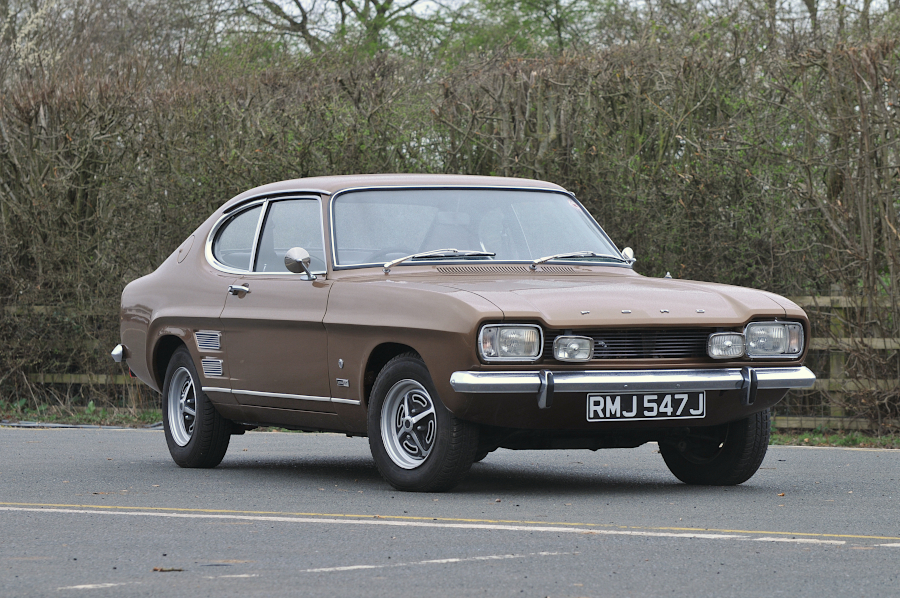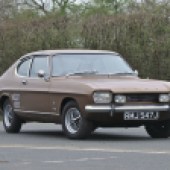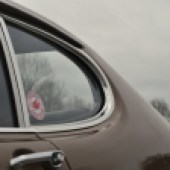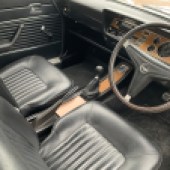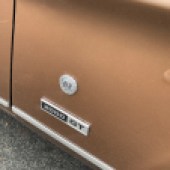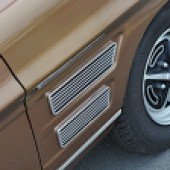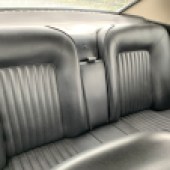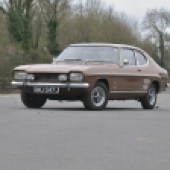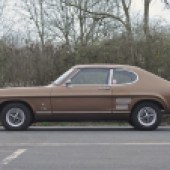We sample an early Ford Capri in rare V4-engined 2000GT XLR specification, resplendent in Tawny Gold metallic
Words: Paul Wager With thanks to: Brightwells
We Brits do love a Capri. So much so in fact that right-hand drive production continued in Cologne solely for UK buyers until 1986, long after the car had been discontinued in European markets.
By then of course the car was in its third generation, examples of which command unfeasibly strong money at auction today – especially the run-out ‘Brooklands’ 280 and the 2.8 Injection Special on which it was based.
By this time though the Capri was really something of a dinosaur and in all technical aspects was hopelessly outclassed by more modern coupes like the Scirocco as well as the similarly ageing Alfetta GTV. The decidedly loose handling imparted by the combination of nose-heavy layout and rear leaf springs, plus the decidedly conservative 160bhp from the pushrod Cologne motor made the car something of a timewarp in its twilight years, although the traditional feel was also of course exactly why buyers loved it.
In Mk1 form on the other hand as originally debuted in 1969, the Capri seems like a more confident offering, perfectly judged for the times to offer a slice of glamour in an era when a rakish two-door was still an unusual choice.
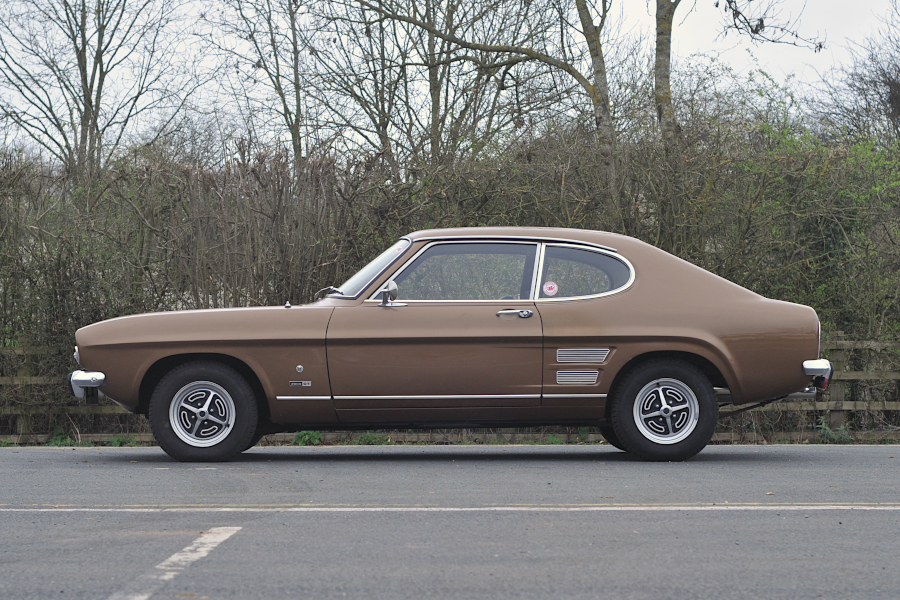
Back then its style was a real selling point and if anything was more successful than the Mustang, with its flowing lines and neat proportions giving it something of a Ferrari flavour. As ever with Ford, the underpinnings were essentially those of the Cortina which meant both affordable running costs and a wide choice of powerplants ranging from 1.3-litre four-pot to the 3-litre V6.
And what we have here is the rarest of them all, certainly if we discount the rare RS models: the ‘Essex’ V4 in 2-litre guise. This unusual engine was offered in the UK only briefly before being superseded as the 2.0-litre option by the more conventional Pinto for the Mk2 Capri. It’s an intriguing unit though and actually an entirely different engine from the ‘Cologne’ V4 offered to German Ford customers.
Rated at 93bhp, it gave the 1003kg Capri lively performance and further adding to the rarity of this example, it comes in range-topping XLR trim on top of the 2000GT specification.
It’s also an incredible survivor, looking period perfect in Tawny Gold – alright then, metallic brown – with its pressed-steel sports rims and twin square driving lights. Firing it up reveals a car which is very much on the button, with the Essex V4’s distinctive sound marking it out as something unusual.
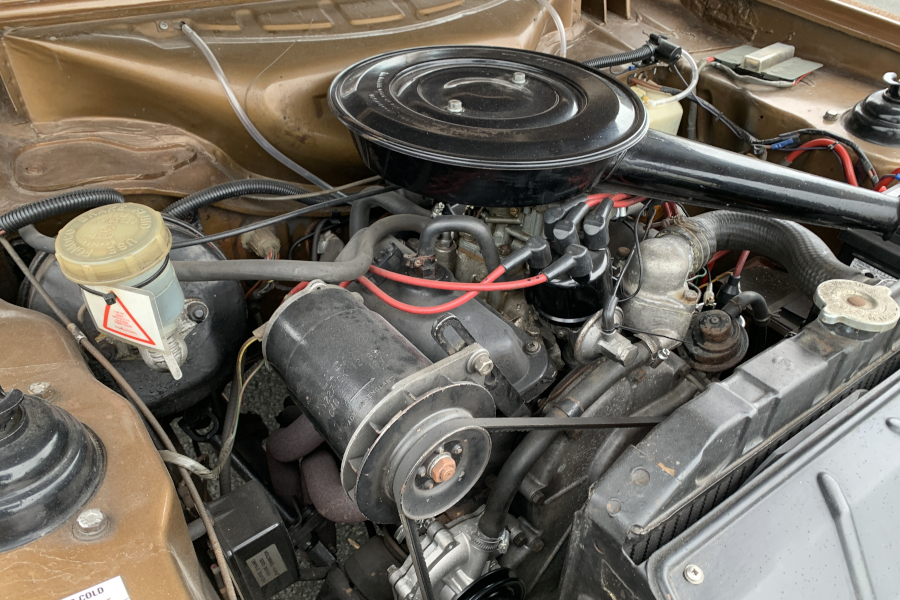
Familiar from both Transits and Saabs of the period, the engine runs a single balancer shaft which means it’s actually a surprisingly smooth unit in everyday use with a definite edge over the coarse Pinto, although it doesn’t want to be revved hard and the redline comes at 5500rpm.
A quickshift kit fitted to this car means that reverse and first are perilously close in the gate, but I know from previous experience that the standard shift is a nice positive affair – and unsurprisingly, very similar to the Cortina. We’ve got just the four gears of course, but where the V4 loses high-revving capability it gains with 104lb ft torque at 3600rpm and the 2000GT feels usefully lively in the mid range.
Handling, which in more powerful Mk3 guise had dropped behind the class also seems entirely capable for this more modestly powered Mk1 as a product of the early ’70s and of course it’s easy to forget that this was a contemporary of the MGB which even back then was positively archaic with its lever arm dampers.
In fact, in the car market of the late ’60s you had to move up a whole cost level to get yourself into anything more exotic which means that by the standards of the time the Capri was a very competent performance coupe. Ford’s brochure quoted a 0-60mph time of 10.4 seconds and a top speed which at 107mph was some way beyond the magic ton.
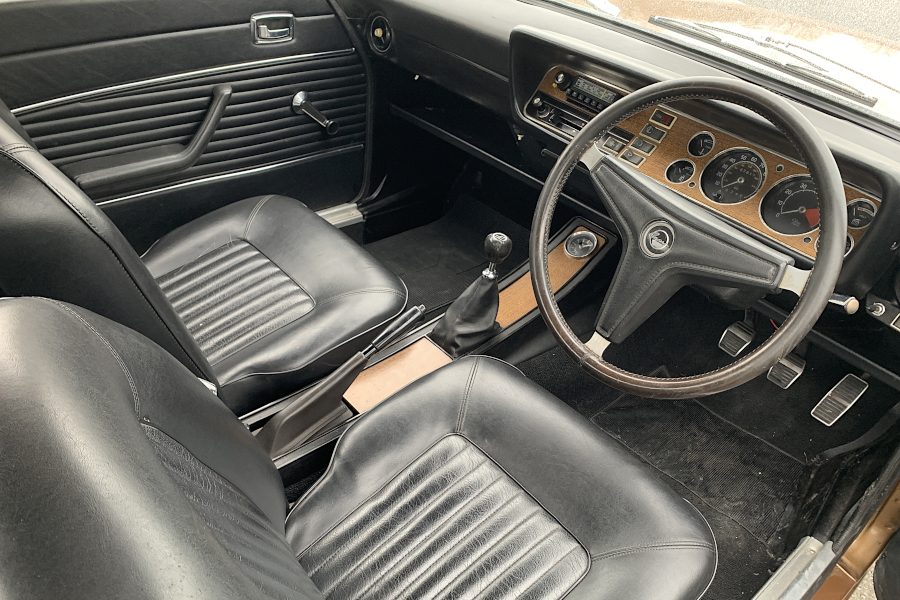
It’s a similar story inside, where the American design influence continues with the deeply recessed dials and faux wood dashboard. The ‘X’ component of the XLR trim provides reclining front seats, separately contoured rears with a folding armrest, dipping mirror and an extra interior lamp, to which the ‘R’ (only available on GT models) adds a leather steering wheel rim and a map reading light. It all adds up to an interior ambience which hints at the American glamour of the Mustang and is also a long way from the workaday Cortina. Naturally, that was the thinking behind Ford’s ‘Capri Custom Plan’ option scheme which allowed no less than 32 different combinations for those willing to plough through the brochures.
As a usable classic today and at similar money to a restored MGB, the Capri ticks all the boxes with the bonus of rarity value and the practical appeal of four full seats with the pace to keep up with modern traffic. And let’s not forget the appeal of that oh-so-Seventies metallic brown – sorry, Tawny Gold.
The Capri is Lot 27 in the Brightwells March sale, estimated at £20,000–22,000. Bidding starts on Saturday, March 23, 2024 and ends on Wednesday, March 27, 2024 from 2pm.

